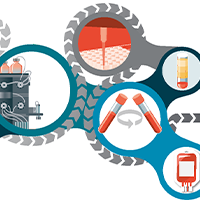Sterility sampling of cell and gene therapy products
Cell & Gene Therapy Insights 2019; 5(9), 1247–1257.
10.18609/cgti.2019.131
This article discusses justification and rationale for determining appropriate and representative sterility test sampling for cell and gene therapy products. This article is intended to help manufacturers ensure that the sterility test sample meets current regulatory expectations, is appropriate for the material being tested, scientifically sound and representative of the batch while also preserving product material for intended patients. Regulatory perspectives for sterility sampling of cell and gene therapies by necessity will differ from the compendial chapters of USP ⟨71⟩ and Ph. Eur. 2.6.1 [1,2]. Most notably this difference is found in Ph. Eur. 2.6.27 which contains more specific sample size guidance for these products while the US biological product regulation in the 2012 revision of 21 CFR 610.12 removes all specifics regarding sample size [3,4]. However, applicable regulations and industry guidance all agree on key points that the sample must be scientifically sound and representative of the entire batch. To assist in meeting this requirement this article presents some differences to consider between cell and gene therapy products and manufacturing processes to that of typical pharmaceutical drug products. These differences include: the stages of manufacturing where aseptic controls are required; product shelf-life; and the number of units produced or batch volumes. Furthermore, unique sampling and release strategies are discussed that impact cell-based products. If reducing the vein-to-vein time is important, some advantages are presented for having the sampling and the sterility test itself initiated by manufacturing. As part of product risk, surveillance data from the platelet industry is presented to better understand the levels of contamination that have potential impact to patients and how that relates to sample size and positive detection. Finally, the probabilities of sampling success and positive detection from smaller cell-based batches is contrasted from the sampling probabilities presented for large pharmaceutical batches. Knowing and applying the differences between typical cell-based batch sizes or volumes versus pharmaceutical drug batch sizes may be substantial for determining an appropriate representative sample and sample size.
